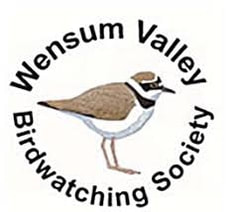|
Speaker: Dominic Buscall Reporter: Sue Gale Dominic Buscall, a founder of Wild Ken Hill, gave a very popular and well-received talk about what they do there and about some of their current projects. The farm has developed over the last 5 or 6 years, from its original state of 75% arable crops and 25% wood and wetland to the current 3 areas of land management. The challenges were to do something about worsening biodiversity, exacerbated by the climate crisis, and to do this in a financially viable way, made possible by support from Natural England and the new farm subsidies which mean that work for the environment can at last be paid for. The three areas at Wild Ken Hill are: 1. the rewilding area; 2. wetland and coastal scrub; and 3. farming using regenerative agriculture. Dominic explained that the big difference between areas 1 and 2 is that in the rewilding area there is no human intervention – nature is in control - whereas in area 2 which is outcome oriented, there is intervention to try and meet those goals. For area 3, the focus is on soil health, with the aim of producing healthy food without excessive inputs or soil disturbance.
Here they use cover crops in the winter to minimise soil loss, use direct drilling techniques instead of tilling the soil, and employ mixed planting, and Dominic believes this to be the first place to be doing all three of these. The result will be better carbon storage in the soil, better water acceptance and retention, and good biodiversity. So how is it going and what are the current issues? The rewilding area is leading to rapid natural regeneration of scrubby species. The Tamworth pigs start this off by rootling in the ground for food, breaking it up and allowing early succession species to germinate. Natural grazing is done by Exmoor ponies, red poll cattle and of course by wild deer. Numbers of all of these need watching but the wild deer are the biggest issue. They can cause too much damage to saplings etc. There is also the 50 acre beaver enclosure, which has already had an enormous impact on the vegetation in that area. 2 pairs were introduced in 2020 and there are now 10 beavers. They have flooded much of the area by creating dams, and they open the canopy in the woods by felling trees, thus making a more varied habitat. There have been frequent sightings of Lesser Spotted Woodpeckers! What was a problem in the dry woodland of Rhododendrons taking over has been solved entirely by the beavers making the area wet. In the traditional conservation area of marshes and coastal scrub it has been difficult to regulate water levels especially with the extremes of rainfall we have experienced. However, there is much better potential for breeding waders. It is also by no means certain that the Environment Agency will continue to maintain the outer sea wall that protects the scrubby area. They have replaced the shingle this year but may not do so again, which would make for a very different area. There are some baseline surveys of the marsh via the RSPB, so that progress can be monitored. Plans were interrupted in July 2022 by the wildfire that burnt out all of the taller vegetation in the coastal scrub area, including 8-10 Turtle Dove territories. Now fire breaks will have to be introduced and there will need to be grazing to reduce the biomass, so access may need to be restricted. The main focus - apart from the production of food crops - in the regenerative farming area is on education and engagement. Groups of professional people, like farmers or conservationists, are entertained almost weekly, and the long-term plan includes the development of visitor facilities including an education centre. Guided tours are offered to explain the use of cover crops, lower pesticide use, intercropping and direct drilling etc. The new technique that excites Dominic the most is undoubtedly the composting, which provides an innovative way to regenerate degraded soils. Commonly it can take decades to do this, but the use of the composting method can reduce this to a few years. Samples of the soil at Wild Ken Hill showed them to be all dead apart from bacteria, with no fungi or protozoa which are essential for healthy soil. A water extract is made from the windrows after composting and sprayed on to the soil. Good results are seen in trials, but it’s a very big job to do on a whole farm! Finally, there is a plan to reintroduce native White-clawed Crayfish to the river running through the farm. It has been isolated and contains no crayfish at all so is an ideal opportunity to establish a native species free from invading competitors. There were plenty of questions for Dominic during and after his talk, which demonstrates the level of interest in the topic. Many thanks to him for a very fascinating evening.
0 Comments
Leave a Reply. |
Please feel free to read through our reports from our monthly indoor / online meetings. Archives
May 2024
Categories |

 RSS Feed
RSS Feed
